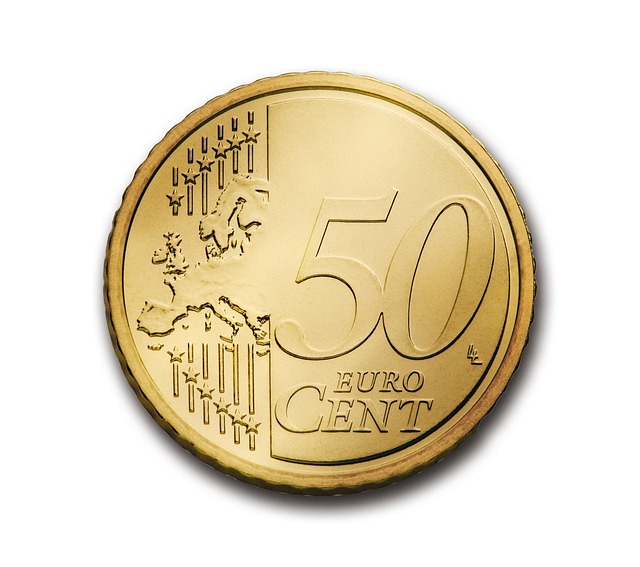The Art of Investing: Crafting Your Financial Masterpiece
Investing is often viewed as a science, rooted in data, analytics, and predictions. However, at its core, investing is also an intricate art form, where intuition, creativity, and emotional intelligence play pivotal roles. Just as an artist meticulously crafts their work, investors sculpt their financial future, blending strategy, knowledge, and personal goals to create an investment masterpiece. This article aims to explore the nuanced art of investing—highlighting key principles, techniques, and mindsets necessary to navigate today’s complex financial landscape.
Understanding the Basics of Investing
Before diving into the artistic elements of investing, it’s essential to grasp the foundational concepts. Investing involves allocating resources, usually money, to generate an income or profit. This could be through stocks, bonds, real estate, or other assets. Unlike saving, which typically aims to preserve capital in low-risk environments, investing seeks growth over time, often accompanied by a higher degree of risk.
It’s also crucial to recognize the different investment vehicles available. Each offers unique opportunities and implications for risk and return:
- Stocks: Ownership in a company; potential for high returns but also increased volatility.
- Bonds: Loans made to governments or corporations; generally safer, offering fixed interest over time.
- Mutual Funds: Pooled funds managed by professionals; offers diversification but comes with management fees.
- Real Estate: Tangible property investment; potential for rental income and appreciation but requires more involvement.
- ETFs: Exchange-traded funds that combine stocks and bonds; versatile and trade like stocks.
Crafting Your Investment Philosophy
As with any form of art, an artist’s unique style emerges from their philosophy. The same applies to investing. Your investment philosophy should reflect your values, risk tolerance, and financial goals. It’s about establishing guiding principles that will navigate your investment decisions.
Consider these aspects as you craft your investment philosophy:
Risk Tolerance
Risk tolerance refers to how much volatility you’re willing to endure in your investments. Understanding your comfort level with market fluctuations is fundamental. Are you conservative, willing to accept minimal risk for stability? Or are you aggressive, looking for high returns even if it means embracing potential losses? Your risk tolerance guides your asset allocation and choice of investment vehicles.
Time Horizon
Investing is often a long-term endeavor. Your time horizon—the length of time you plan to hold your investments—significantly influences your strategy. A longer time horizon typically allows you to weather short-term market volatility, which is critical for market growth, while a shorter horizon may necessitate a more conservative approach.
Financial Goals
Clearly defined financial goals are paramount in shaping your investment journey. Are you saving for retirement, purchasing a home, or funding education? Each goal may dictate different investment strategies, flexibility, and risk tolerance. Aligning your investment choices with your goals helps ensure your financial masterpiece reflects your broader life ambitions.
The Importance of Research and Knowledge
Just as a painter studies colors, techniques, and styles, a successful investor must constantly seek knowledge and conduct research. Mastery in investing requires familiarity with current market trends, economic indicators, and financial news. Various resources, including books, podcasts, financial news platforms, and seminars, can nurture your investing instincts.
Fundamental Analysis
Fundamental analysis entails evaluating a company’s financial health—analyzing income statements, balance sheets, and cash flow statements to determine its intrinsic value. Factors such as revenue growth, earnings consistency, and debt levels will inform your investment decisions. This analysis serves as the foundation for many artistic investment decisions, helping you assess whether a stock is undervalued or overvalued in the market.
Technical Analysis
Technical analysis, on the other hand, focuses on price movements and volume trends. Investors use charts and patterns to predict future price movements based on historical data. While this approach leans more toward the scientific side of investing, incorporating technical analysis can add an artistic flair, allowing you to anticipate market turns and capitalize on trends.
Creating a Diversified Portfolio
Just as a painter uses a palette of colors to create a stunning work of art, diversifying your investment portfolio is crucial in managing risk and optimizing returns. Diversification involves mixing various asset classes to mitigate the impact of any single investment’s poor performance on your overall portfolio.
The principle behind diversification lies in the different responses of asset classes to market changes. For example, stocks may fluctuate based on economic conditions, while bonds may provide stability during downturns. By blending assets, you paint a more balanced financial picture.
Asset Allocation
Asset allocation is a specific strategy within diversification that involves determining the percentage of your portfolio dedicated to different asset classes based on your goals, risk tolerance, and time horizon. Younger investors may lean more towards stocks for growth potential, while those closer to retirement may prioritize bond investments for stability.
Emotional Intelligence in Investing
Emotion plays a significant role in investing. Fear and greed can lead investors to make impulsive decisions, abandoning their strategies during market downturns or chasing after hot stocks without proper analysis. Developing emotional intelligence—understanding and managing your emotions—can enhance your decision-making process.
Building emotional resilience can allow you to react calmly to market fluctuations, maintaining focus on your investment philosophy and long-term goals. Mindfulness techniques, such as meditative practices, can assist investors in cultivating a disciplined mindset.
The Importance of Patience
Patience is a hallmark of great artistry, and investing is no different. Building wealth takes time. Compounding returns can significantly magnify your investments, but it requires patience to endure the inevitable market fluctuations. Those who attempt to time the market or consistently chase quick gains often experience frustration and disappointment. Committing to your crafted investment strategy and allowing it to evolve over time ultimately achieves financial success.
Learning from Mistakes
Every artist experiences the occasional misstep, and investors are no exception. Mistakes—and the lessons learned from them—are integral to growth in the investment world. Whether it’s succumbing to emotional decision-making or failing to adhere to your investment plan, acknowledging and learning from your misjudgments will enhance your future decision-making skills.
Reviewing your investment history regularly allows you to reflect and extract valuable insights. Ask yourself what went wrong, what strategies worked well, and how you can apply those lessons moving forward. This practice can refine your skills and help you become a more proficient investor.
The Role of Professional Guidance
As one may seek mentorship from an experienced artist, engaging with financial professionals can be invaluable in your investing journey. Financial advisors, brokers, and wealth management firms can provide tailored guidance, helping you refine your investment strategy and navigate complex financial markets.
Choosing the right financial professional involves considering their qualifications, experience, and your comfort level. A trusted advisor should communicate effectively, align with your investment philosophy, and be transparent about fees and services. Leverage their expertise as a resource that adds to your knowledge and decision-making process.
Conclusion: Your Financial Masterpiece
Investing is an art form that transcends mere numbers and strategies; it encapsulates your dreams, aspirations, and life’s goals. By understanding the fundamentals of investing, crafting a personalized philosophy, conducting thorough research, and incorporating discipline and patience, you pave the way for crafting your financial masterpiece. Embrace the journey as a continuous evolution of learning, reflection, and growth; it’s through this evolution that you can create a fulfilling financial legacy that speaks to your artistic investment vision.
As you progress, remember that every stroke in your investment canvas contributes to a broader picture. The allure of investing lies in its potential, complexity, and the fulfillment it provides as you shape your financial future. Happy investing!



